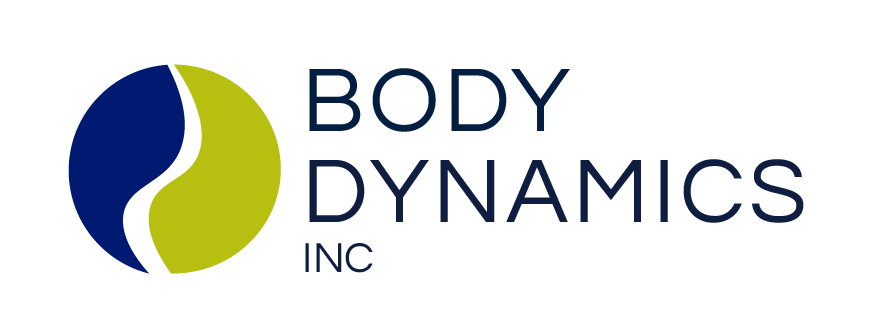Massage therapists at Body Dynamics offer a range of techniques that complement or encompass the healing process. Massage is often used in conjunction with physical therapy to speed rehabilitation from an injury, but it can also stand alone as a modality that gives people significant relief from uncomfortable or painful muscle and fascial tension and stress. This article discusses just three approaches to manipulating soft tissue that can lead to restored health and awareness of the body-mind connection.
1. Swedish Massage
“In the West, the basic massage technique is Swedish massage, which is designed to move fluids and encourage circulation. There are prescribed strokes and directions of those strokes to obtain the desired results.” (Discovery, A Handbook on Learning the Theory and Practice of Therapeutic Massage, Potomac Massage Training Institute, p. 14) Swedish massage is primarily used for relaxation and can take the time of an entire session. There is nothing quite like a good Swedish massage to help one experience a deep state of rest. This form of massage is a gift for the entire being — body, mind, spirit. Swedish massage can also be used by the therapist to warm up an area needing work before moving deeper into the tissue.
2. Deep Tissue Massage
“Deep tissue massage focuses on all layers of muscle tissue, including the deeper layers. It uses slow strokes and deeper pressure on specific areas in order to release or relieve chronic muscle tension and to break up or reduce scar tissue by ‘unsticking’ fibers or muscles, increasing blood flow to the area, and relaxing or lengthening chronically shortened muscle fibers. It is more focused, specific, and generally deeper than Swedish, which tends to address the body as a whole.” -Handout on Deep Tissue Massage, Potomac Massage Training Institute Deep tissue massage is regularly used by therapists at Body Dynamics and can be a great complement to physical therapy. It is important to note that “deep” tissue does not necessarily mean “depth” of pressure. The work can go deep even when the therapist is in the top layers of muscle. This is where the therapist’s listening skills come into play. The hands of the massage therapist pick up shifts in the client’s body and can feel how far to sink into the muscle. It is like a dance.
3. Myofascial Release
What is Myofascial Release (MFR)?
MFR is a safe and effective hands-on approach that includes gentle but firm pressure to fascial restrictions to help eliminate pain and restore motion. This technique allows the fascia to elongate through application of pressure over a period of time thereby releasing fascial restriction throughout the entire body.
What is Fascia?
Fascia is densely woven connective tissue that covers and interprets every system of the body: muscle, bone, nerve, artery and vein, internal organs, brain and spinal cord. It is not just a system of separate coverings. It is actually one continuous structure that exists from head to toe without interruption. Each part of the entire body is connected to every other part by the fascia, like the yarn in a sweater.
Causes of Myofascial Restrictions
Myofascial restrictions can be caused by traumatic injury, repetitive strain, poor posture over long periods of time, surgeries, or inflammatory processes that happen in the body throughout our lifetime. Any of these can cause a tightening down of the fascia that, over time, can lead to a decrease in motion or pressure on pain sensitive nerve endings, eventually limiting our function. A myofascial restriction can create up to 2,000 pounds of pressure per square inch, pulling our skeletal system out of alignment, which then leads to symptoms of pain and pressure.
BDI Highlight
What to Expect During Treatment
When you see a MFR therapist, he or she will first look at your posture and bony alignment standing and lying down. This allows the therapist to see where a restriction may be pulling the skeletal system out of alignment. Hands on palpation throughout the body will also give clues to where the tissue is restricted by feeling for areas that are hot, hard and tender to the touch. The therapist will then treat where the client has symptoms but will also address underlying areas of what may be causing the symptoms. The client is encouraged to be an active participant by being present to what s/he feels in her body. It is important that the correct amount of pressure be used to keep the client from guarding or tensing so that a full release of the fascial restriction can occur. The client takes deep breaths to help soften, release and let go.
What to Expect After Treatment
Often people will feel relief right after a treatment session or change is felt the next day. For best results, it is often best to schedule 3 treatment sessions close together about a week apart from each other. The therapist might suggest some self-treatment techniques to do at home in between appointments to maximize results.
In Sum
This article describes three of several approaches to clinical massage therapy used at BDI. Other approaches offered include Neuromuscular Therapy, superficial Manual Lymph Drainage, Oncology Massage, Reiki, Thai Massage and (soon to be included) Pregnancy Massage. Your therapists are Gwynn Hegyi, Kathryn Sparks, Tracey Hobbie and Bobby Sidney. We are eager to work with you!
